 The Cisco Service Oriented Network Architecture
The Cisco Service Oriented Network Architecture
![]() The extremely rich variety of application-level business solutions available today and the need to integrate these applications drives the need for a new network architecture. This section introduces the Cisco Vision and Framework that enable customers to build a more intelligent network infrastructure. The Cisco SONA architectural framework shifts the view of the network from a pure traffic transport-oriented view toward a service- and application-oriented view.
The extremely rich variety of application-level business solutions available today and the need to integrate these applications drives the need for a new network architecture. This section introduces the Cisco Vision and Framework that enable customers to build a more intelligent network infrastructure. The Cisco SONA architectural framework shifts the view of the network from a pure traffic transport-oriented view toward a service- and application-oriented view.
 Business Drivers for a New Network Architecture
Business Drivers for a New Network Architecture
![]() New business requirements, the growth of applications, and the evolution of IT combine to drive the need for a new network architecture. In today’s business environment, intense competition and time-to-market pressures are prompting enterprises to look for new IT solutions that can help them better respond to market and customer demands. Consumers are asking for new products and service offerings—and they want them fast. They are also demanding improved customer service, enhanced customization flexibility, and greater security, all at a lower cost.
New business requirements, the growth of applications, and the evolution of IT combine to drive the need for a new network architecture. In today’s business environment, intense competition and time-to-market pressures are prompting enterprises to look for new IT solutions that can help them better respond to market and customer demands. Consumers are asking for new products and service offerings—and they want them fast. They are also demanding improved customer service, enhanced customization flexibility, and greater security, all at a lower cost.
![]() Modern networks connect multiple resources and information assets within the organization as well as provide access to external resources. In this environment, the IT model has evolved from mainframes, to client/server models, to Internet applications, as illustrated in Figure 2-1. The Cisco vision of the next phase of IT evolution is a real-time infrastructure that integrates the network and the applications as one system.
Modern networks connect multiple resources and information assets within the organization as well as provide access to external resources. In this environment, the IT model has evolved from mainframes, to client/server models, to Internet applications, as illustrated in Figure 2-1. The Cisco vision of the next phase of IT evolution is a real-time infrastructure that integrates the network and the applications as one system.
![]() Organizations are finding that networking is no longer just about connectivity; rather, network intelligence is starting to play a role in improving business performance and processes. Intelligence enhances the network’s role as a foundation for enabling communication, collaboration, and business success. With increased awareness of the applications that operate on the network foundation, the network becomes an active participant in applications, network management, business systems, and services to enable them to work better.
Organizations are finding that networking is no longer just about connectivity; rather, network intelligence is starting to play a role in improving business performance and processes. Intelligence enhances the network’s role as a foundation for enabling communication, collaboration, and business success. With increased awareness of the applications that operate on the network foundation, the network becomes an active participant in applications, network management, business systems, and services to enable them to work better.
![]() The network is the common single element that connects and enables all components of the IT infrastructure.
The network is the common single element that connects and enables all components of the IT infrastructure.
![]() Organizations need their networks to evolve to intelligent systems that participate actively in the delivery of applications to effectively reach the goals of improved productivity, reduced time to market, greater revenue, lower expenses, and stronger customer relationships. An effective network provides the foundation for transforming business practices.
Organizations need their networks to evolve to intelligent systems that participate actively in the delivery of applications to effectively reach the goals of improved productivity, reduced time to market, greater revenue, lower expenses, and stronger customer relationships. An effective network provides the foundation for transforming business practices.
 Intelligence in the Network
Intelligence in the Network
![]() Integrating intelligence into the network involves aligning network and business requirements. To accommodate today’s and tomorrow’s network requirements, the Cisco vision of the future includes the Intelligent Information Network (IIN), a strategy that addresses how the network is integrated with businesses and business priorities. This vision encompasses the following features:
Integrating intelligence into the network involves aligning network and business requirements. To accommodate today’s and tomorrow’s network requirements, the Cisco vision of the future includes the Intelligent Information Network (IIN), a strategy that addresses how the network is integrated with businesses and business priorities. This vision encompasses the following features:
-
 Integration of networked resources and information assets that have been largely unlinked: The modern converged networks with integrated voice, video, and data require that IT departments (and other departments traditionally responsible for other technologies) more closely link the IT infrastructure with the network.
Integration of networked resources and information assets that have been largely unlinked: The modern converged networks with integrated voice, video, and data require that IT departments (and other departments traditionally responsible for other technologies) more closely link the IT infrastructure with the network. -
 Intelligence across multiple products and infrastructure layers: The intelligence built in to each component of the network is extended networkwide and applies end-to-end.
Intelligence across multiple products and infrastructure layers: The intelligence built in to each component of the network is extended networkwide and applies end-to-end. -
 Active participation of the network in the delivery of services and applications: With added intelligence, it is possible for the network to actively manage, monitor, and optimize service and application delivery across the entire IT environment.
Active participation of the network in the delivery of services and applications: With added intelligence, it is possible for the network to actively manage, monitor, and optimize service and application delivery across the entire IT environment.
![]() With this technology vision, Cisco is helping organizations address new IT challenges, such as the deployment of service-oriented architectures, web services, and virtualization (as described in the upcoming Phase 2 bullet). This vision offers an evolutionary approach that consists of three phases in which functionality can be added to the infrastructure as required. The three phases are illustrated in Figure 2-2 and described as follows:
With this technology vision, Cisco is helping organizations address new IT challenges, such as the deployment of service-oriented architectures, web services, and virtualization (as described in the upcoming Phase 2 bullet). This vision offers an evolutionary approach that consists of three phases in which functionality can be added to the infrastructure as required. The three phases are illustrated in Figure 2-2 and described as follows:
-
 Phase 1: Integrated transport: Everything (data, voice, and video) consolidates onto an IP network for secure network convergence. By integrating data, voice, and video transport into a single standards-based modular network, organizations can simplify network management and generate enterprisewide efficiencies. Network convergence also lays the foundation for a new class of IP-enabled applications, now known as Cisco Unified Communications solutions.
Phase 1: Integrated transport: Everything (data, voice, and video) consolidates onto an IP network for secure network convergence. By integrating data, voice, and video transport into a single standards-based modular network, organizations can simplify network management and generate enterprisewide efficiencies. Network convergence also lays the foundation for a new class of IP-enabled applications, now known as Cisco Unified Communications solutions.Note  Cisco Unified Communications is the name, launched in March 2006, for the entire range of what were previously known as Cisco IP communications products. These include all call control, conferencing, voice mail and messaging, customer contact, IP phone, video telephony, videoconferencing, rich media clients, and voice application products.
Cisco Unified Communications is the name, launched in March 2006, for the entire range of what were previously known as Cisco IP communications products. These include all call control, conferencing, voice mail and messaging, customer contact, IP phone, video telephony, videoconferencing, rich media clients, and voice application products. -
 Phase 2: Integrated services: When the network infrastructure is converged, IT resources can be pooled and shared, or virtualized, to flexibly address the changing needs of the organization. By extending this virtualization concept to encompass server, storage, and network elements, an organization can transparently use all its resources more efficiently. Business continuity is also enhanced because in the event of a local systems failure, shared resources across the intelligent network can provide needed services.
Phase 2: Integrated services: When the network infrastructure is converged, IT resources can be pooled and shared, or virtualized, to flexibly address the changing needs of the organization. By extending this virtualization concept to encompass server, storage, and network elements, an organization can transparently use all its resources more efficiently. Business continuity is also enhanced because in the event of a local systems failure, shared resources across the intelligent network can provide needed services. -
 Phase 3: Integrated applications: This phase focuses on making the network application-aware so that it can optimize application performance and more efficiently deliver networked applications to users. In addition to capabilities such as content caching, load balancing, and application-level security, application network services make it possible for the network to simplify the application infrastructure by integrating intelligent application message handling, optimization, and security into the existing network.
Phase 3: Integrated applications: This phase focuses on making the network application-aware so that it can optimize application performance and more efficiently deliver networked applications to users. In addition to capabilities such as content caching, load balancing, and application-level security, application network services make it possible for the network to simplify the application infrastructure by integrating intelligent application message handling, optimization, and security into the existing network.
| Note |
|
| Note |
|
 Cisco SONA Framework
Cisco SONA Framework
![]() The Cisco SONA is an architectural framework that illustrates how to build integrated systems and guides the evolution of enterprises toward more intelligent networks. Using the SONA framework, enterprises can improve flexibility and increase efficiency by optimizing applications, business processes, and resources to enable IT to have a greater effect on business.
The Cisco SONA is an architectural framework that illustrates how to build integrated systems and guides the evolution of enterprises toward more intelligent networks. Using the SONA framework, enterprises can improve flexibility and increase efficiency by optimizing applications, business processes, and resources to enable IT to have a greater effect on business.
![]() The SONA framework leverages the extensive product-line services, proven architectures, and experience of Cisco and its partners to help enterprises achieve their business goals.
The SONA framework leverages the extensive product-line services, proven architectures, and experience of Cisco and its partners to help enterprises achieve their business goals.
![]() The SONA framework, shown in Figure 2-3, shows how integrated systems can allow a dynamic, flexible architecture and provide for operational efficiency through standardization and virtualization.
The SONA framework, shown in Figure 2-3, shows how integrated systems can allow a dynamic, flexible architecture and provide for operational efficiency through standardization and virtualization.
![]() The SONA framework defines the following three layers:
The SONA framework defines the following three layers:
-
 Networked Infrastructure layer: Where all the IT resources are interconnected across a converged network foundation. The IT resources include servers, storage, and clients. The Networked Infrastructure layer represents how these resources exist in different places in the network, including the campus, branch, data center, enterprise edge, WAN, metropolitan-area network (MAN), and with the teleworker. The objective of this layer is to provide connectivity, anywhere and anytime.
Networked Infrastructure layer: Where all the IT resources are interconnected across a converged network foundation. The IT resources include servers, storage, and clients. The Networked Infrastructure layer represents how these resources exist in different places in the network, including the campus, branch, data center, enterprise edge, WAN, metropolitan-area network (MAN), and with the teleworker. The objective of this layer is to provide connectivity, anywhere and anytime. The Networked Infrastructure layer includes the network devices and links to connect servers, storage, and clients in different places in the network.
The Networked Infrastructure layer includes the network devices and links to connect servers, storage, and clients in different places in the network. -
 Interactive Services layer: Includes both application networking services and infrastructure services. This layer enables efficient allocation of resources to applications and business processes delivered through the networked infrastructure. This layer includes the following services:
Interactive Services layer: Includes both application networking services and infrastructure services. This layer enables efficient allocation of resources to applications and business processes delivered through the networked infrastructure. This layer includes the following services:-
 Voice and collaboration services
Voice and collaboration services -
 Mobility services
Mobility services -
 Wireless services
Wireless services -
 Security and identity services
Security and identity services -
 Storage services
Storage services -
 Compute services
Compute services -
 Application networking services (content networking services)
Application networking services (content networking services) -
 Network infrastructure virtualization
Network infrastructure virtualization -
 Adaptive network management services
Adaptive network management services -
 Quality of service (QoS)
Quality of service (QoS) -
 High availability
High availability -
 IP multicast
IP multicast
-
-
 Application layer: This layer includes business applications and collaboration applications. The objective of this layer is to meet business requirements and achieve efficiencies by leveraging the interactive services layer. This layer includes the following collaborative applications:
Application layer: This layer includes business applications and collaboration applications. The objective of this layer is to meet business requirements and achieve efficiencies by leveraging the interactive services layer. This layer includes the following collaborative applications:-
 Instant messaging
Instant messaging -
 Cisco Unified Contact Center
Cisco Unified Contact Center -
 Cisco Unity (unified messaging)
Cisco Unity (unified messaging) -
 Cisco IP Communicator and Cisco Unified IP Phones
Cisco IP Communicator and Cisco Unified IP Phones -
 Cisco Unified MeetingPlace
Cisco Unified MeetingPlace -
 Video delivery using Cisco Digital Media System
Video delivery using Cisco Digital Media System -
 IP telephony
IP telephony
-
| Note |
|
![]() Figure 2-4 illustrates some of these SONA offerings within each of the layers.
Figure 2-4 illustrates some of these SONA offerings within each of the layers.
| Note |
|
![]() The benefits of SONA include the following:
The benefits of SONA include the following:
-
 Functionality: Supports the organizational requirements.
Functionality: Supports the organizational requirements. -
 Scalability: Supports growth and expansion of organizational tasks by separating functions and products into layers; this separation makes it easier to grow the network.
Scalability: Supports growth and expansion of organizational tasks by separating functions and products into layers; this separation makes it easier to grow the network. -
 Availability: Provides the necessary services, reliably, anywhere, anytime.
Availability: Provides the necessary services, reliably, anywhere, anytime. -
 Performance: Provides the desired responsiveness, throughput, and utilization on a per-application basis through the network infrastructure and services.
Performance: Provides the desired responsiveness, throughput, and utilization on a per-application basis through the network infrastructure and services. -
 Manageability: Provides control, performance monitoring, and fault detection.
Manageability: Provides control, performance monitoring, and fault detection. -
 Efficiency: Provides the required network services and infrastructure with reasonable operational costs and appropriate capital investment on a migration path to a more intelligent network, through step-by-step network services growth.
Efficiency: Provides the required network services and infrastructure with reasonable operational costs and appropriate capital investment on a migration path to a more intelligent network, through step-by-step network services growth. -
 Security: Provides for an effective balance between usability and security while protecting information assets and infrastructure from inside and outside threats.
Security: Provides for an effective balance between usability and security while protecting information assets and infrastructure from inside and outside threats.
Network Design Methodology
![]() The network design methodology presented in this section is derived from the Cisco Prepare, Plan, Design, Implement, Operate, and Optimize (PPDIOO) methodology, which reflects a network’s lifecycle. The following sections describe the PPDIOO phases and their relation to the network design methodology, and the benefits of the lifecycle approach to network design. Subsequent sections explain the design methodology in detail.
The network design methodology presented in this section is derived from the Cisco Prepare, Plan, Design, Implement, Operate, and Optimize (PPDIOO) methodology, which reflects a network’s lifecycle. The following sections describe the PPDIOO phases and their relation to the network design methodology, and the benefits of the lifecycle approach to network design. Subsequent sections explain the design methodology in detail.
 Design as an Integral Part of the PPDIOO Methodology
Design as an Integral Part of the PPDIOO Methodology
![]() The PPDIOO network lifecycle, illustrated in Figure 2-5, reflects the phases of a standard network’s lifecycle. As shown in this figure, the PPDIOO lifecycle phases are separate, yet closely related.
The PPDIOO network lifecycle, illustrated in Figure 2-5, reflects the phases of a standard network’s lifecycle. As shown in this figure, the PPDIOO lifecycle phases are separate, yet closely related.
![]() The following describes each PPDIOO phase:
The following describes each PPDIOO phase:
-
 Prepare phase: The Prepare phase involves establishing the organizational (business) requirements, developing a network strategy, and proposing a high-level conceptual architecture, identifying technologies that can best support the architecture. Financial justification for the network strategy is established by assessing the business case for the proposed architecture.
Prepare phase: The Prepare phase involves establishing the organizational (business) requirements, developing a network strategy, and proposing a high-level conceptual architecture, identifying technologies that can best support the architecture. Financial justification for the network strategy is established by assessing the business case for the proposed architecture. -
 Plan phase: This phase involves identifying the network requirements, which are based on the goals for the network, where the network will be installed, who will require which network services, and so forth. The Plan phase also involves assessing the sites where the network will be installed and any existing networks, and performing a gap analysis to determine if the existing system infrastructure, sites, and operational environment can support the proposed system. A project plan helps manage the tasks, responsibilities, critical milestones, and resources required to implement the changes to the network. The project plan should align with the scope, cost, and resource parameters established in the original business requirements. The output of this phase is a set of network requirements.
Plan phase: This phase involves identifying the network requirements, which are based on the goals for the network, where the network will be installed, who will require which network services, and so forth. The Plan phase also involves assessing the sites where the network will be installed and any existing networks, and performing a gap analysis to determine if the existing system infrastructure, sites, and operational environment can support the proposed system. A project plan helps manage the tasks, responsibilities, critical milestones, and resources required to implement the changes to the network. The project plan should align with the scope, cost, and resource parameters established in the original business requirements. The output of this phase is a set of network requirements. -
 Design phase: The initial requirements determined in the Plan phase drive the network design specialists’ activities. These specialists design the network according to those initial requirements, incorporating any additional data gathered during network analysis and network audit (when upgrading an existing network) and through discussion with managers and network users. The network design specification that is produced is a comprehensive detailed design that meets current business and technical requirements and incorporates specifications to support availability, reliability, security, scalability, and performance. This design specification provides the basis for the implementation activities.
Design phase: The initial requirements determined in the Plan phase drive the network design specialists’ activities. These specialists design the network according to those initial requirements, incorporating any additional data gathered during network analysis and network audit (when upgrading an existing network) and through discussion with managers and network users. The network design specification that is produced is a comprehensive detailed design that meets current business and technical requirements and incorporates specifications to support availability, reliability, security, scalability, and performance. This design specification provides the basis for the implementation activities. -
 Implement phase: Implementation and verification begins after the design has been approved. The network and any additional components are built according to the design specifications, with the goal of integrating devices without disrupting the existing network or creating points of vulnerability.
Implement phase: Implementation and verification begins after the design has been approved. The network and any additional components are built according to the design specifications, with the goal of integrating devices without disrupting the existing network or creating points of vulnerability. -
 Operate phase: Operation is the final test of the design’s appropriateness. The Operate phase involves maintaining network health through day-to-day operations, which might include maintaining high availability and reducing expenses. The fault detection and correction and performance monitoring that occur in daily operations provide initial data for the network lifecycle’s Optimize phase.
Operate phase: Operation is the final test of the design’s appropriateness. The Operate phase involves maintaining network health through day-to-day operations, which might include maintaining high availability and reducing expenses. The fault detection and correction and performance monitoring that occur in daily operations provide initial data for the network lifecycle’s Optimize phase. -
 Optimize phase: The Optimize phase is based on proactive network management, the goal of which is to identify and resolve issues before real problems arise and the organization is affected. Reactive fault detection and correction (troubleshooting) are necessary when proactive management cannot predict and mitigate the failures. In the PPDIOO process, the Optimize phase might lead to network redesign if too many network problems or errors arise, if performance does not meet expectations, or if new applications are identified to support organizational and technical requirements.
Optimize phase: The Optimize phase is based on proactive network management, the goal of which is to identify and resolve issues before real problems arise and the organization is affected. Reactive fault detection and correction (troubleshooting) are necessary when proactive management cannot predict and mitigate the failures. In the PPDIOO process, the Optimize phase might lead to network redesign if too many network problems or errors arise, if performance does not meet expectations, or if new applications are identified to support organizational and technical requirements.
![]() Although Design is one of the six PPDIOO phases, all the other phases influence design decisions, and the Design phase interacts closely with them, as follows:
Although Design is one of the six PPDIOO phases, all the other phases influence design decisions, and the Design phase interacts closely with them, as follows:
-
 The requirements derived from the Prepare and Plan phases are the basis for network design.
The requirements derived from the Prepare and Plan phases are the basis for network design. -
 The Implement phase includes the initial verification of the design on the actual network.
The Implement phase includes the initial verification of the design on the actual network. -
 During the Operate and Optimize phases, the final decision is made about the appropriateness of the design, based on network analysis and any problems that arise. The network might have to be redesigned to correct any discovered errors.
During the Operate and Optimize phases, the final decision is made about the appropriateness of the design, based on network analysis and any problems that arise. The network might have to be redesigned to correct any discovered errors.
 Benefits of the Lifecycle Approach to Network Design
Benefits of the Lifecycle Approach to Network Design
![]() The network lifecycle approach provides many benefits, including the following:
The network lifecycle approach provides many benefits, including the following:
-
 Lowering the total cost of network ownership:
Lowering the total cost of network ownership: -
 Identifying and validating technology requirements
Identifying and validating technology requirements -
 Planning for infrastructure changes and resource requirements
Planning for infrastructure changes and resource requirements -
 Developing a sound network design aligned with technical requirements and business goals
Developing a sound network design aligned with technical requirements and business goals -
 Accelerating successful implementation
Accelerating successful implementation -
 Improving the efficiency of the network and of the staff supporting it
Improving the efficiency of the network and of the staff supporting it -
 Reducing operating expenses by improving the efficiency of operation processes and tools
Reducing operating expenses by improving the efficiency of operation processes and tools
-
-
 Increasing network availability:
Increasing network availability: -
 Assessing the state of the network’s security and its ability to support the proposed design
Assessing the state of the network’s security and its ability to support the proposed design -
 Specifying the correct set of hardware and software releases and keeping them operational and current
Specifying the correct set of hardware and software releases and keeping them operational and current -
 Producing a sound operational design and validating network operation
Producing a sound operational design and validating network operation -
 Staging and testing the proposed system before deployment
Staging and testing the proposed system before deployment -
 Improving staff skills
Improving staff skills -
 Proactively monitoring the system and assessing availability trends and alerts
Proactively monitoring the system and assessing availability trends and alerts -
 Proactively identifying security breaches and defining remediation plans
Proactively identifying security breaches and defining remediation plans
-
-
-
 Establishing business requirements and technology strategies
Establishing business requirements and technology strategies -
 Readying sites to support the system to be implemented
Readying sites to support the system to be implemented -
 Integrating technical requirements and business goals into a detailed design and demonstrating that the network is functioning as specified
Integrating technical requirements and business goals into a detailed design and demonstrating that the network is functioning as specified -
 Expertly installing, configuring, and integrating system components
Expertly installing, configuring, and integrating system components -
 Continually enhancing performance
Continually enhancing performance
-
-
 Accelerating access to applications and services:
Accelerating access to applications and services: -
 Assessing and improving operational preparedness to support current and planned network technologies and services
Assessing and improving operational preparedness to support current and planned network technologies and services -
 Improving service-delivery efficiency and effectiveness by increasing availability, resource capacity, and performance
Improving service-delivery efficiency and effectiveness by increasing availability, resource capacity, and performance -
 Improving the availability, reliability, and stability of the network and the applications running on it
Improving the availability, reliability, and stability of the network and the applications running on it -
 Managing and resolving problems affecting the system and keeping software applications current
Managing and resolving problems affecting the system and keeping software applications current
-
 Design Methodology
Design Methodology
![]() When working in an environment that requires creative production on a tight schedule—for example, when designing an internetwork—using a methodology can be helpful. A methodology is a documented, systematic way of doing something.
When working in an environment that requires creative production on a tight schedule—for example, when designing an internetwork—using a methodology can be helpful. A methodology is a documented, systematic way of doing something.
![]() Following a design methodology can have many advantages:
Following a design methodology can have many advantages:
-
 It ensures that no step is missed when the process is followed.
It ensures that no step is missed when the process is followed. -
 It provides a framework for the design process deliverables.
It provides a framework for the design process deliverables. -
 It encourages consistency in the creative process, enabling network designers to set appropriate deadlines and maintain customer and manager satisfaction.
It encourages consistency in the creative process, enabling network designers to set appropriate deadlines and maintain customer and manager satisfaction. -
 It allows customers and managers to validate that the designers have thought about how to meet their requirements.
It allows customers and managers to validate that the designers have thought about how to meet their requirements.
![]() The design methodology presented here includes three basic steps; some of the design methodology steps are intrinsic to the PPDIOO Design phase, whereas other steps are related to other PPDIOO phases:
The design methodology presented here includes three basic steps; some of the design methodology steps are intrinsic to the PPDIOO Design phase, whereas other steps are related to other PPDIOO phases:
|
|
|
|
|
|
|
|
|
![]() When the design is complete, the design implementation process is executed; this process includes the following steps:
When the design is complete, the design implementation process is executed; this process includes the following steps:
![]() The remaining sections in this chapter detail each of the design methodology steps, followed by a brief discussion of the implementation process steps.
The remaining sections in this chapter detail each of the design methodology steps, followed by a brief discussion of the implementation process steps.
Identifying Customer Requirements
![]() As the organization’s network grows, so does the organization’s dependency on the network and the applications that use it. Network-accessible organizational data and mission-critical applications that are essential to the organization’s operations depend on network availability.
As the organization’s network grows, so does the organization’s dependency on the network and the applications that use it. Network-accessible organizational data and mission-critical applications that are essential to the organization’s operations depend on network availability.
![]() To design a network that meets customers’ needs, the organizational goals, organizational constraints, technical goals, and technical constraints must be identified. This section describes the process of determining which applications and network services already exist and which ones are planned, along with associated organizational and technical goals and constraints. We begin by explaining how to assess the scope of the design project. After gathering all customer requirements, the designer must identify and obtain any missing information and reassess the scope of the design project to develop a comprehensive understanding of the customer’s needs.
To design a network that meets customers’ needs, the organizational goals, organizational constraints, technical goals, and technical constraints must be identified. This section describes the process of determining which applications and network services already exist and which ones are planned, along with associated organizational and technical goals and constraints. We begin by explaining how to assess the scope of the design project. After gathering all customer requirements, the designer must identify and obtain any missing information and reassess the scope of the design project to develop a comprehensive understanding of the customer’s needs.
 Assessing the Scope of a Network Design Project
Assessing the Scope of a Network Design Project
![]() When assessing the scope of a network design, consider the following:
When assessing the scope of a network design, consider the following:
-
 Whether the design is for a new network or is a modification of an existing network.
Whether the design is for a new network or is a modification of an existing network. -
 Whether the design is for an entire enterprise network, a subset of the network, or a single segment or module. For example, the designer must ascertain whether the design is for a set of Campus LANs, a WAN, or a remote-access network.
Whether the design is for an entire enterprise network, a subset of the network, or a single segment or module. For example, the designer must ascertain whether the design is for a set of Campus LANs, a WAN, or a remote-access network. -
 Whether the design addresses a single function or the network’s entire functionality.
Whether the design addresses a single function or the network’s entire functionality.
![]() Examples of designs that would involve the entire network include one in which all branch office LANs are upgraded to support Fast Ethernet, and a migration from traditional Private Branch Exchange (PBX)–based telephony to an IP telephony solution. A project to reduce bottlenecks on a slow WAN is an example that would likely affect only the WAN. Adding wireless client mobility or provisioning core redundancy are designs that would likely affect only the campus.
Examples of designs that would involve the entire network include one in which all branch office LANs are upgraded to support Fast Ethernet, and a migration from traditional Private Branch Exchange (PBX)–based telephony to an IP telephony solution. A project to reduce bottlenecks on a slow WAN is an example that would likely affect only the WAN. Adding wireless client mobility or provisioning core redundancy are designs that would likely affect only the campus.
![]() The Open Systems Interconnection (OSI) reference model is important during the design phase. The network designer should review the project scope from the protocol layer perspective and decide whether the design is needed for only the network layer, or if other layers are also involved. For example:
The Open Systems Interconnection (OSI) reference model is important during the design phase. The network designer should review the project scope from the protocol layer perspective and decide whether the design is needed for only the network layer, or if other layers are also involved. For example:
-
 The network layer includes the routing and addressing design.
The network layer includes the routing and addressing design. -
 The application layer includes the design of application data transport (such as transporting voice).
The application layer includes the design of application data transport (such as transporting voice). -
 The physical and data link layers include decisions about the connection types and the technologies to be used, such as Gigabit Ethernet, Asynchronous Transfer Mode, and Frame Relay.
The physical and data link layers include decisions about the connection types and the technologies to be used, such as Gigabit Ethernet, Asynchronous Transfer Mode, and Frame Relay.
| Note |
|
![]() Table 2-1 exhibits sample results of assessing the scope of design for a sample enterprise, Corporation X.
Table 2-1 exhibits sample results of assessing the scope of design for a sample enterprise, Corporation X.
|
|
|
|---|---|
|
|
|
|
|
|
|
|
|
 Identifying Required Information
Identifying Required Information
![]() Determining requirements includes extracting initial requirements from the customer and then refining these with other data that has been collected from the organization.
Determining requirements includes extracting initial requirements from the customer and then refining these with other data that has been collected from the organization.
Extracting Initial Requirements
![]() Initial design requirements are typically extracted from the Request for Proposal (RFP) or Request for Information (RFI) documents that the customer issues. An RFP is a formal request to vendors for proposals that meet the requirements that the document identifies. An RFI is typically a less formal document an organization issues to solicit ideas and information from vendors about a specific project.
Initial design requirements are typically extracted from the Request for Proposal (RFP) or Request for Information (RFI) documents that the customer issues. An RFP is a formal request to vendors for proposals that meet the requirements that the document identifies. An RFI is typically a less formal document an organization issues to solicit ideas and information from vendors about a specific project.
![]() The first step in the design process should be predocumenting (sifting, processing, reordering, translating, and so forth) the design requirements and reviewing them with the customer for verification and approval, obtaining direct customer input, in either oral or written form. Figure 2-6 illustrates an iterative approach to developing the design requirements document.
The first step in the design process should be predocumenting (sifting, processing, reordering, translating, and so forth) the design requirements and reviewing them with the customer for verification and approval, obtaining direct customer input, in either oral or written form. Figure 2-6 illustrates an iterative approach to developing the design requirements document.
![]() Figure 2-6 illustrates the following steps:
Figure 2-6 illustrates the following steps:
|
|
|
|
|
|
|
|
|
|
|
|
|
|
|
![]() Steps 2 to 5 are repeated if the customer has additional comments about the draft document.
Steps 2 to 5 are repeated if the customer has additional comments about the draft document.
Gathering Network Requirements
![]() As illustrated in Figure 2-7, the process of gathering requirements can be broken down into five steps. During these steps (which are sometimes called milestones), the designer discusses the project with the customer’s staff to determine and gather the necessary data, including appropriate documentation.
As illustrated in Figure 2-7, the process of gathering requirements can be broken down into five steps. During these steps (which are sometimes called milestones), the designer discusses the project with the customer’s staff to determine and gather the necessary data, including appropriate documentation.
![]() As shown in Figure 2-7, the steps are as follows:
As shown in Figure 2-7, the steps are as follows:
|
|
|
|
|
|
|
|
|
|
|
|
|
|
|
![]() These steps provide the designer with data that must be carefully interpreted, analyzed, and presented to support the design proposal. Throughout these steps, the designer takes thorough notes, produces documentation, and presents the findings to the customer for further discussion.
These steps provide the designer with data that must be carefully interpreted, analyzed, and presented to support the design proposal. Throughout these steps, the designer takes thorough notes, produces documentation, and presents the findings to the customer for further discussion.
![]() The process is not unidirectional; the designer might return to a step and make additional inquiries about issues as they arise during the design process. The next five sections detail these steps.
The process is not unidirectional; the designer might return to a step and make additional inquiries about issues as they arise during the design process. The next five sections detail these steps.
 Planned Applications and Network Services
Planned Applications and Network Services
![]() The designer must determine which applications the customer is planning to use and the importance of each of these applications. Using a table helps organize and categorize the applications and services planned; the table should contain the following information:
The designer must determine which applications the customer is planning to use and the importance of each of these applications. Using a table helps organize and categorize the applications and services planned; the table should contain the following information:
-
 Planned application types: Include e-mail, groupware (tools that aid group work), voice networking, web browsing, video on demand (VoD), databases, file sharing and transfer, computer-aided manufacturing, and so forth.
Planned application types: Include e-mail, groupware (tools that aid group work), voice networking, web browsing, video on demand (VoD), databases, file sharing and transfer, computer-aided manufacturing, and so forth. -
 Applications: Specific applications that will be used, such as Microsoft Internet Explorer, Cisco Unified MeetingPlace, and so forth.
Applications: Specific applications that will be used, such as Microsoft Internet Explorer, Cisco Unified MeetingPlace, and so forth. -
 Level of importance: The importance of the applications—whether critical or important or not important—is noted.
Level of importance: The importance of the applications—whether critical or important or not important—is noted. -
 Comments: Additional notes taken during the data-gathering process.
Comments: Additional notes taken during the data-gathering process.
![]() Table 2-2 shows an example of data gathered about the planned applications for the sample company, Corporation X.
Table 2-2 shows an example of data gathered about the planned applications for the sample company, Corporation X.
|
|
|
|
|
|---|---|---|---|
|
|
|
| |
|
|
|
|
|
|
|
|
| |
|
|
|
| |
|
|
|
|
|
|
|
|
|
| Note |
|
| Note |
|
![]() The planned infrastructure services table is similar to the planned application table. It lists infrastructure services that are planned for the network and additional comments about those services.
The planned infrastructure services table is similar to the planned application table. It lists infrastructure services that are planned for the network and additional comments about those services.
![]() Recall that infrastructure services include security, QoS, network management, high availability, and IP multicast. Software distribution, backup, directory services, host naming, and user authentication and authorization are examples of other services and solutions that are deployed to support a typical organization’s many applications. Table 2-3 shows sample data that was gathered about the infrastructure services planned for the sample company, Corporation X.
Recall that infrastructure services include security, QoS, network management, high availability, and IP multicast. Software distribution, backup, directory services, host naming, and user authentication and authorization are examples of other services and solutions that are deployed to support a typical organization’s many applications. Table 2-3 shows sample data that was gathered about the infrastructure services planned for the sample company, Corporation X.
|
|
|
|---|---|
|
|
|
|
|
|
|
|
|
|
|
|
|
|
|
|
|
|
|
|
|
 Organizational Goals
Organizational Goals
![]() Every design project should begin by determining the organizational goals that are to be achieved. The criteria for success must be determined, and the consequences of a failure understood.
Every design project should begin by determining the organizational goals that are to be achieved. The criteria for success must be determined, and the consequences of a failure understood.
![]() Network designers are often eager to start by analyzing the technical goals before considering the organizational goals and constraints. However, detailed attention to organizational goals and constraints is important for a project’s success. In discussions about organizational goals, the designer obtains knowledge about the customer’s expectations of the design’s positive outcomes for the organization. Both short- and long-term goals should be identified. This organization-centered approach allows the network to become a strategic asset and competitive weapon for the customer.
Network designers are often eager to start by analyzing the technical goals before considering the organizational goals and constraints. However, detailed attention to organizational goals and constraints is important for a project’s success. In discussions about organizational goals, the designer obtains knowledge about the customer’s expectations of the design’s positive outcomes for the organization. Both short- and long-term goals should be identified. This organization-centered approach allows the network to become a strategic asset and competitive weapon for the customer.
![]() Preliminary research on the organization’s activities, products, processes, services, market, suppliers, competitive advantages, and structure enhances the positioning of the technologies and products to be used in the network.
Preliminary research on the organization’s activities, products, processes, services, market, suppliers, competitive advantages, and structure enhances the positioning of the technologies and products to be used in the network.
![]() This is an opportunity to determine what is important to the customer. Some sample questions a designer might ask to help determine organizational goals include the following:
This is an opportunity to determine what is important to the customer. Some sample questions a designer might ask to help determine organizational goals include the following:
-
 What are you trying to accomplish with this project?
What are you trying to accomplish with this project? -
 What business challenges are you currently facing?
What business challenges are you currently facing? -
 What are the consequences of not resolving these issues?
What are the consequences of not resolving these issues? -
 How would you measure or quantify success if you could fix or correct the identified problems and issues?
How would you measure or quantify success if you could fix or correct the identified problems and issues? -
 What applications are most critical to your organization?
What applications are most critical to your organization? -
 What is the major objective of this project?
What is the major objective of this project? -
 What is driving the change?
What is driving the change? -
 Do you need to support any government or safety or legal mandates?
Do you need to support any government or safety or legal mandates? -
 What are your main concerns with the implementation of a new solution?
What are your main concerns with the implementation of a new solution? -
 What technologies or services are needed to support your objectives?
What technologies or services are needed to support your objectives? -
 What other technology projects and business initiatives will affect your group in the next two to five years?
What other technology projects and business initiatives will affect your group in the next two to five years? -
 What skill sets does your technical staff currently have?
What skill sets does your technical staff currently have? -
 What is your goal for return on investment?
What is your goal for return on investment?
![]() Organizational goals differ from organization to organization. The following are some typical goals that commercial organizations might have:
Organizational goals differ from organization to organization. The following are some typical goals that commercial organizations might have:
-
 Increase the operation’s generated revenue and profitability. A new design should reduce costs in certain segments and propel growth in others. The network designer should discuss with the customer any expectations about how the new network will influence revenues and profits.
Increase the operation’s generated revenue and profitability. A new design should reduce costs in certain segments and propel growth in others. The network designer should discuss with the customer any expectations about how the new network will influence revenues and profits. -
 Shorten development cycles and enhance productivity by improving internal data availability and interdepartmental communications.
Shorten development cycles and enhance productivity by improving internal data availability and interdepartmental communications. -
 Improve customer support and offer additional customer services that can expedite reaction to customer needs and improve customer satisfaction.
Improve customer support and offer additional customer services that can expedite reaction to customer needs and improve customer satisfaction. -
 Open the organization’s information infrastructure to all key stakeholders (prospects, investors, customers, partners, suppliers, and employees), and build relationships and information accessibility to a new level.
Open the organization’s information infrastructure to all key stakeholders (prospects, investors, customers, partners, suppliers, and employees), and build relationships and information accessibility to a new level.
| Note |
|
![]() To illustrate the importance of considering organizational goals in a network design, consider two manufacturing enterprises that are contemplating network updates. Enterprise A’s main reason for change is to improve customer satisfaction. It has received many complaints that customer information is difficult to obtain and understand, and there is a need for online ordering capability. In contrast, Enterprise B is driven by the need to reduce costs—this is a mandate from its CEO. When design decisions are made, these goals will most likely result in different outcomes. For example, Enterprise A might choose to implement an integrated product information database with e-commerce capability, whereas Enterprise B might not see the value of investing in this technology.
To illustrate the importance of considering organizational goals in a network design, consider two manufacturing enterprises that are contemplating network updates. Enterprise A’s main reason for change is to improve customer satisfaction. It has received many complaints that customer information is difficult to obtain and understand, and there is a need for online ordering capability. In contrast, Enterprise B is driven by the need to reduce costs—this is a mandate from its CEO. When design decisions are made, these goals will most likely result in different outcomes. For example, Enterprise A might choose to implement an integrated product information database with e-commerce capability, whereas Enterprise B might not see the value of investing in this technology.
![]() Following are examples of the types of data that can be gathered about some common organizational goals:
Following are examples of the types of data that can be gathered about some common organizational goals:
-
 Increase competitiveness: List competitive organizations and their advantages and weaknesses. Note possible improvements that might increase competitiveness or effectiveness.
Increase competitiveness: List competitive organizations and their advantages and weaknesses. Note possible improvements that might increase competitiveness or effectiveness. -
 Reduce costs: Reducing operational costs can result in increased profitability (even without a revenue increase) or increased services with the same revenue. List current expenses to help determine where costs could be reduced.
Reduce costs: Reducing operational costs can result in increased profitability (even without a revenue increase) or increased services with the same revenue. List current expenses to help determine where costs could be reduced. -
 Improve customer support: Customer support services help provide a competitive advantage. List current customer support services, with comments about possible and desired improvements.
Improve customer support: Customer support services help provide a competitive advantage. List current customer support services, with comments about possible and desired improvements. -
 Add new customer services: List current customer services, and note future and desired (requested) services.
Add new customer services: List current customer services, and note future and desired (requested) services.
![]() Table 2-4 presents data gathered about the organizational goals of a sample company, Corporation X.
Table 2-4 presents data gathered about the organizational goals of a sample company, Corporation X.
|
|
|
|
|---|---|---|
|
|
|
|
|
|
|
|
|
|
|
|
|
|
|
|
 Organizational Constraints
Organizational Constraints
![]() When assessing organizational goals, it is important to analyze any organizational constraints that might affect the network design. Some sample questions the designer might ask to help determine organizational constraints include the following:
When assessing organizational goals, it is important to analyze any organizational constraints that might affect the network design. Some sample questions the designer might ask to help determine organizational constraints include the following:
-
 What in your current processes works well?
What in your current processes works well? -
 What in your current processes does not work well?
What in your current processes does not work well? -
 Which processes are labor-intensive?
Which processes are labor-intensive? -
 What are the barriers for implementation in your organization?
What are the barriers for implementation in your organization? -
 What are your major concerns with the implementation of a new solution?
What are your major concerns with the implementation of a new solution? -
 What financial and timing elements must be considered?
What financial and timing elements must be considered? -
 What projects already have budget approval?
What projects already have budget approval? -
 Are other planned technology projects and business initiatives compatible with your current infrastructure and technology solutions?
Are other planned technology projects and business initiatives compatible with your current infrastructure and technology solutions? -
 What qualifications does your current staff have? Do you plan to hire more staff? If so, for what roles?
What qualifications does your current staff have? Do you plan to hire more staff? If so, for what roles? -
 Do you have a budget for technical development for your staff?
Do you have a budget for technical development for your staff? -
 Are there any policies in place that might affect the project?
Are there any policies in place that might affect the project?
![]() Typical constraints include the following:
Typical constraints include the following:
-
 Budget: Reduced budgets or limited resources often force network designers to implement an affordable solution rather than the best technical solution. This usually entails some compromises in availability, manageability, performance, and scalability. The budget must include all equipment purchases, software licenses, maintenance agreements, staff training, and so forth. Budget is often the final decision point for design elements, selected equipment, and so on. The designer must know how much money is available to invest in a solid design. It also useful to know the areas in which the network can be compromised to meet budget requirements.
Budget: Reduced budgets or limited resources often force network designers to implement an affordable solution rather than the best technical solution. This usually entails some compromises in availability, manageability, performance, and scalability. The budget must include all equipment purchases, software licenses, maintenance agreements, staff training, and so forth. Budget is often the final decision point for design elements, selected equipment, and so on. The designer must know how much money is available to invest in a solid design. It also useful to know the areas in which the network can be compromised to meet budget requirements. -
 Personnel: The availability of trained personnel within the organization might be a design consideration. Organizations might not have enough trained personnel, or they might not have enough personnel. Familiarity with both the equipment and technologies speeds deployment and reduces cost, and trained technicians must be available to verify that all network elements are working. Therefore, the designer must know the number and availability of operations personnel, their expertise, and possible training requirements. Additional constraints might be imposed if the organization is outsourcing network management. The designer must consider the network’s implementation and maintenance phases, which require adequately trained staff.
Personnel: The availability of trained personnel within the organization might be a design consideration. Organizations might not have enough trained personnel, or they might not have enough personnel. Familiarity with both the equipment and technologies speeds deployment and reduces cost, and trained technicians must be available to verify that all network elements are working. Therefore, the designer must know the number and availability of operations personnel, their expertise, and possible training requirements. Additional constraints might be imposed if the organization is outsourcing network management. The designer must consider the network’s implementation and maintenance phases, which require adequately trained staff. -
 Policies: Organizations have different policies about protocols, standards, vendors, and applications; to design the network successfully, the designer must understand these policies. For example, the designer should determine customer policies related to single-vendor or multivendor platforms; an end-to-end single-vendor solution might be a benefit, because compatibility issues do not restrain the network. As another example, many organizations, such as government agencies (for example, defense departments), often have strict policies preventing implementation of proprietary protocols.
Policies: Organizations have different policies about protocols, standards, vendors, and applications; to design the network successfully, the designer must understand these policies. For example, the designer should determine customer policies related to single-vendor or multivendor platforms; an end-to-end single-vendor solution might be a benefit, because compatibility issues do not restrain the network. As another example, many organizations, such as government agencies (for example, defense departments), often have strict policies preventing implementation of proprietary protocols. -
 Schedule: The organization’s executive management must discuss and approve the project schedule to avoid possible disagreements about deadlines. For example, the introduction of new network applications often drives the new network design; the implementation time frames for new applications are often tightly connected and therefore influence the available time for network design.
Schedule: The organization’s executive management must discuss and approve the project schedule to avoid possible disagreements about deadlines. For example, the introduction of new network applications often drives the new network design; the implementation time frames for new applications are often tightly connected and therefore influence the available time for network design.
![]() Table 2-5 shows organizational constraints and accompanying data that has been collected for a sample company, Corporation X.
Table 2-5 shows organizational constraints and accompanying data that has been collected for a sample company, Corporation X.
|
|
|
|
|---|---|---|
|
|
|
|
|
|
|
|
|
|
|
|
|
|
|
|
 Technical Goals
Technical Goals
![]() The technical goals of the project must also be determined before the design starts. Some sample questions the designer might ask to help determine technical goals include the following:
The technical goals of the project must also be determined before the design starts. Some sample questions the designer might ask to help determine technical goals include the following:
-
 What are your technology priorities?
What are your technology priorities? -
 How does your technology budgeting process work?
How does your technology budgeting process work? -
 What infrastructure issues exist or will exist related to your applications rollouts?
What infrastructure issues exist or will exist related to your applications rollouts? -
 What skill sets does your technical staff need to acquire?
What skill sets does your technical staff need to acquire? -
 Does your current network have any performance issues?
Does your current network have any performance issues? -
 Which portions of your network are considered mission-critical?
Which portions of your network are considered mission-critical? -
 Do you anticipate significant growth in the number of network users over the next few years?
Do you anticipate significant growth in the number of network users over the next few years? -
 How is your network managed now?
How is your network managed now?
![]() The following list describes some common technical goals:
The following list describes some common technical goals:
-
 Improve network performance: An increase in the number of users and the introduction of new applications might degrade network performance, especially responsiveness and throughput. The first goal of network redesign is usually to increase performance—for example, by upgrading the speed of links or by partitioning the network into smaller segments.
Improve network performance: An increase in the number of users and the introduction of new applications might degrade network performance, especially responsiveness and throughput. The first goal of network redesign is usually to increase performance—for example, by upgrading the speed of links or by partitioning the network into smaller segments.Note  Performance is a general term that includes responsiveness, throughput, and resource utilization. The users of networked applications and their managers are usually most sensitive to responsiveness issues; speed is of the essence. The network system’s managers often look to throughput as a measure of effectiveness in meeting the organization’s needs. Executives who have capital budget responsibility tend to evaluate resource utilization as a measure of economic efficiency. It is important to consider the audience when presenting performance information.
Performance is a general term that includes responsiveness, throughput, and resource utilization. The users of networked applications and their managers are usually most sensitive to responsiveness issues; speed is of the essence. The network system’s managers often look to throughput as a measure of effectiveness in meeting the organization’s needs. Executives who have capital budget responsibility tend to evaluate resource utilization as a measure of economic efficiency. It is important to consider the audience when presenting performance information. -
 Improve security and reliability of mission-critical applications and data: Increased threats from both inside and outside the enterprise network require the most up-to-date security rules and technologies to avoid disruptions of network operation.
Improve security and reliability of mission-critical applications and data: Increased threats from both inside and outside the enterprise network require the most up-to-date security rules and technologies to avoid disruptions of network operation. -
 Decrease expected downtime and related expenses: When a network failure occurs, downtime must be minimal, and the network must respond quickly to minimize related costs.
Decrease expected downtime and related expenses: When a network failure occurs, downtime must be minimal, and the network must respond quickly to minimize related costs. -
 Modernize outdated technologies: The emergence of new network technologies and applications demands regular updates to and replacement of outdated equipment and technologies.
Modernize outdated technologies: The emergence of new network technologies and applications demands regular updates to and replacement of outdated equipment and technologies. -
 Improve scalability of the network: Networks must be designed to provide for upgrades and future growth.
Improve scalability of the network: Networks must be designed to provide for upgrades and future growth. -
 Simplify network management: Simplify network management functions so that they are easy to use and easily understood.
Simplify network management: Simplify network management functions so that they are easy to use and easily understood.
![]() Using a table helps the designer identify technical goals. Different goals have different levels of importance, which the customer should determine. One way of expressing the level of importance is with percentages: Specific technical goals are rated in importance on a scale from 1 to 100, with the sum totaling 100; this scale provides direction for the designer when choosing equipment, protocols, features, and so forth.
Using a table helps the designer identify technical goals. Different goals have different levels of importance, which the customer should determine. One way of expressing the level of importance is with percentages: Specific technical goals are rated in importance on a scale from 1 to 100, with the sum totaling 100; this scale provides direction for the designer when choosing equipment, protocols, features, and so forth.
![]() Table 2-6 depicts the desired technical goals that were gathered for the sample company, Corporation X, along with their importance rating and additional comments. In this example, the designer sees that the customer places great importance on availability, scalability, and performance; this suggests that the network design should include redundant equipment, redundant paths, use of high-speed links, and so forth.
Table 2-6 depicts the desired technical goals that were gathered for the sample company, Corporation X, along with their importance rating and additional comments. In this example, the designer sees that the customer places great importance on availability, scalability, and performance; this suggests that the network design should include redundant equipment, redundant paths, use of high-speed links, and so forth.
|
|
|
|
|---|---|---|
|
|
|
|
|
|
|
|
|
|
|
|
|
|
| |
|
|
|
|
|
|
| |
|
|
 Technical Constraints
Technical Constraints
![]() Network designers might face various technical constraints during the design process. Some sample questions the designer might ask to help determine technical constraints include the following:
Network designers might face various technical constraints during the design process. Some sample questions the designer might ask to help determine technical constraints include the following:
-
 How do you determine your technology priorities?
How do you determine your technology priorities? -
 Do you have a technology refresh process? If so, is that an obstacle, or does it support the proposed project?
Do you have a technology refresh process? If so, is that an obstacle, or does it support the proposed project? -
 What urgent technical problems require immediate resolution or mitigation?
What urgent technical problems require immediate resolution or mitigation? -
 Do you have a plan for technical development for your staff in specific areas?
Do you have a plan for technical development for your staff in specific areas? -
 Do any applications require special network features (protocols and so forth)?
Do any applications require special network features (protocols and so forth)?
![]() Good network design addresses constraints by identifying possible trade-offs, such as the following:
Good network design addresses constraints by identifying possible trade-offs, such as the following:
-
 Existing equipment: The network design process is usually progressive; legacy equipment must coexist with new equipment.
Existing equipment: The network design process is usually progressive; legacy equipment must coexist with new equipment. -
 Bandwidth availability: Insufficient bandwidth in parts of the network where the bandwidth cannot be increased because of technical constraints must be resolved by other means.
Bandwidth availability: Insufficient bandwidth in parts of the network where the bandwidth cannot be increased because of technical constraints must be resolved by other means. -
 Application compatibility: If the new network is not being introduced at the same time as new applications, the design must provide compatibility with old applications.
Application compatibility: If the new network is not being introduced at the same time as new applications, the design must provide compatibility with old applications. -
 Lack of qualified personnel: Lack of qualified personnel suggests that the designer must consider the need for additional training; otherwise, certain features might have to be dropped. For example, if the network proposal includes the use of IP telephony but the network administrators are not proficient in IP telephony, it might be necessary to propose an alternative solution.
Lack of qualified personnel: Lack of qualified personnel suggests that the designer must consider the need for additional training; otherwise, certain features might have to be dropped. For example, if the network proposal includes the use of IP telephony but the network administrators are not proficient in IP telephony, it might be necessary to propose an alternative solution.
![]() Using a table can facilitate the process of gathering technical constraints. The designer identifies the technical constraints and notes the current situation and the necessary changes that are required to mitigate a certain constraint.
Using a table can facilitate the process of gathering technical constraints. The designer identifies the technical constraints and notes the current situation and the necessary changes that are required to mitigate a certain constraint.
![]() Table 2-7 presents sample technical constraints gathered for Corporation X. Under existing equipment, the designer notes that the coaxial cabling in the LAN’s physical cabling plant still exists and comments that twisted pair and fiber optics should replace it. The bandwidth availability indicates that the WAN service provider does not have any other available links; the organization should consider changing to another service provider. Application compatibility suggests that the designer should take care when choosing equipment.
Table 2-7 presents sample technical constraints gathered for Corporation X. Under existing equipment, the designer notes that the coaxial cabling in the LAN’s physical cabling plant still exists and comments that twisted pair and fiber optics should replace it. The bandwidth availability indicates that the WAN service provider does not have any other available links; the organization should consider changing to another service provider. Application compatibility suggests that the designer should take care when choosing equipment.
|
|
|
|
|---|---|---|
|
|
|
|
|
|
|
|
|
|
|
|

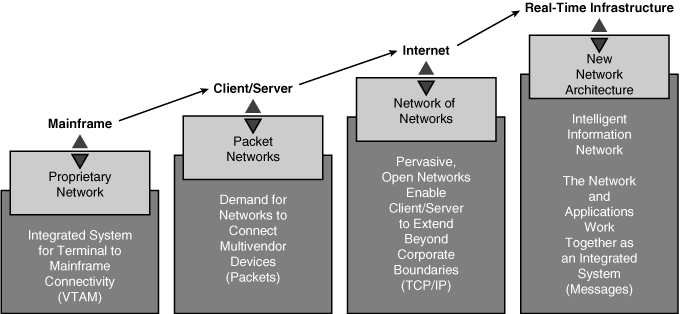
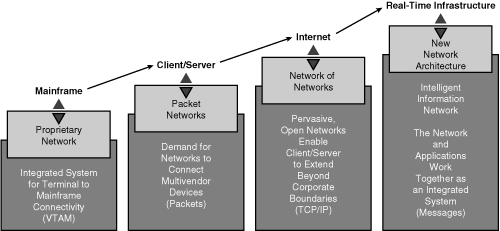
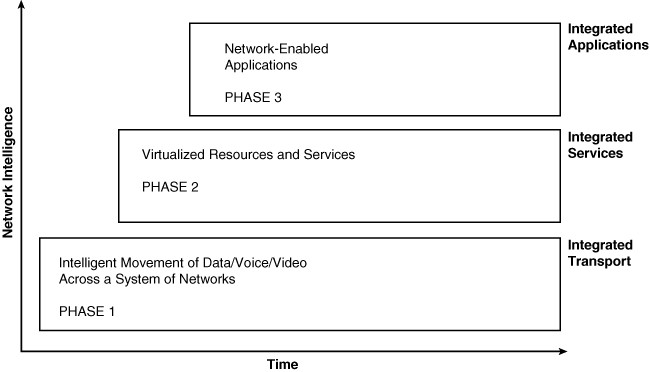
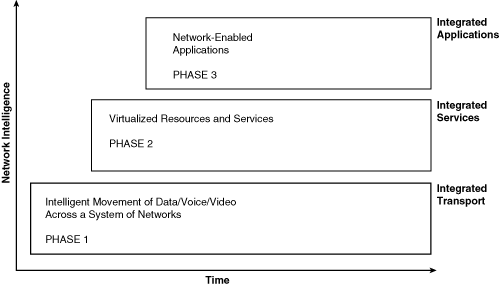
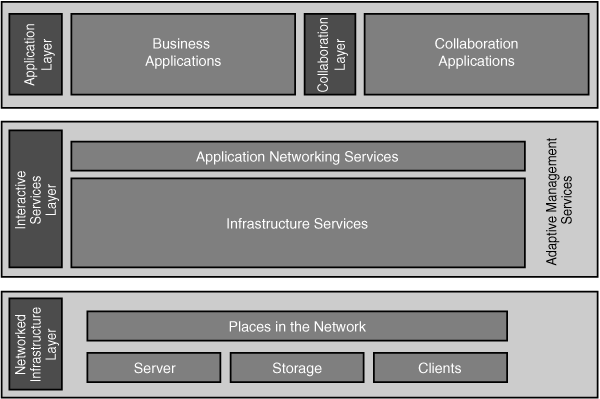
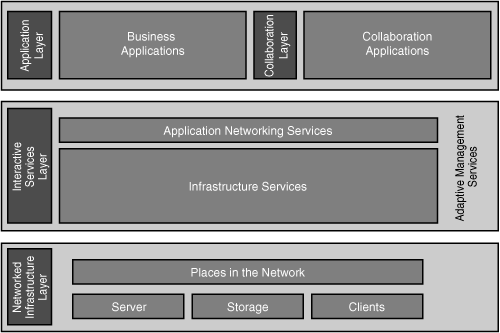
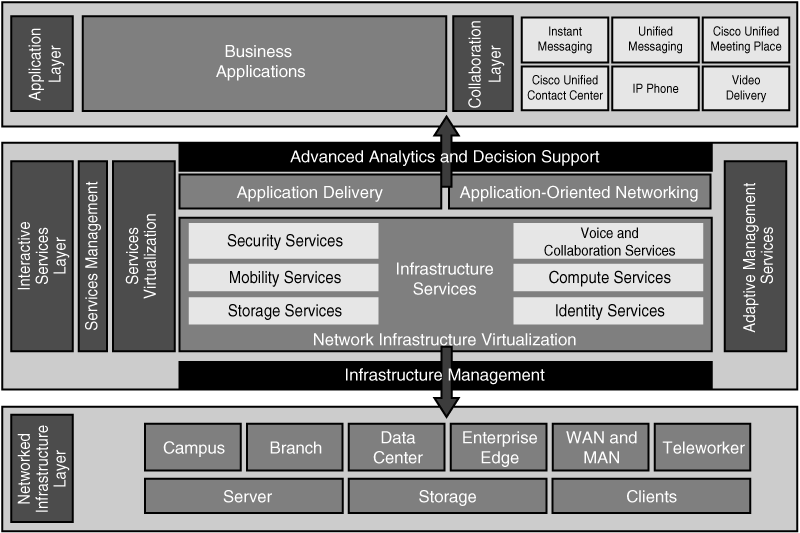
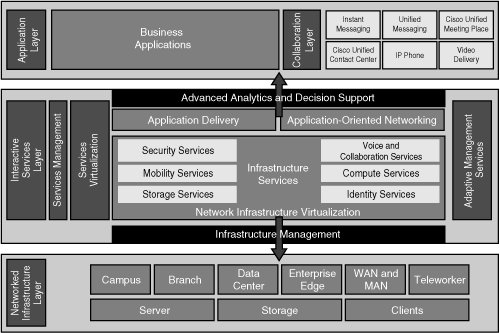
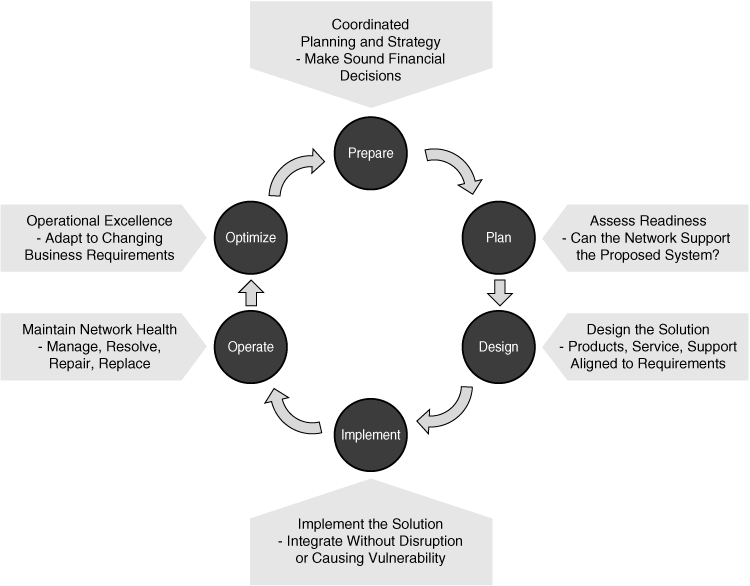
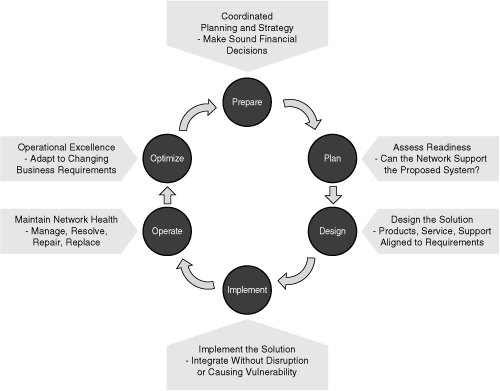
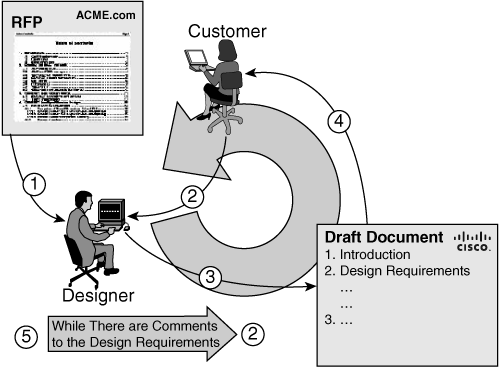
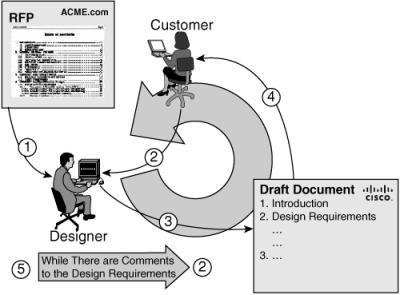
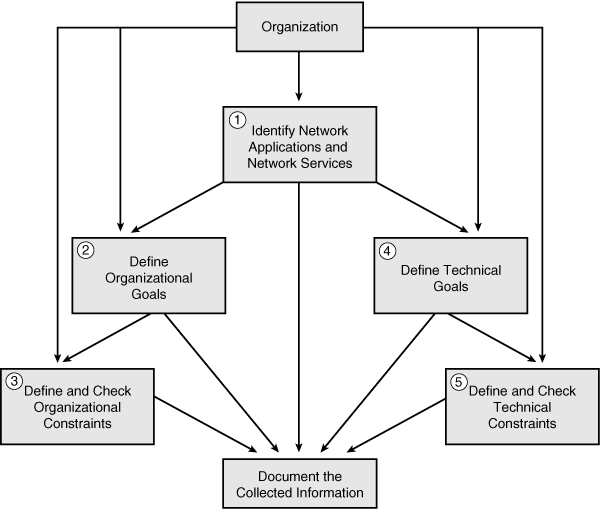
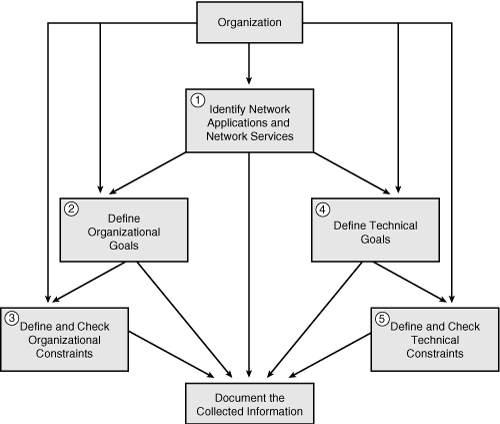
3 comments
how could i get all the book contents?
I have found that this site is very informative, interesting and very well written. keep up the nice high quality writing. Gordon Engle
Very informative content
click here
sure braindumps
dumps
dumps free
dumps pdf
Post a Comment